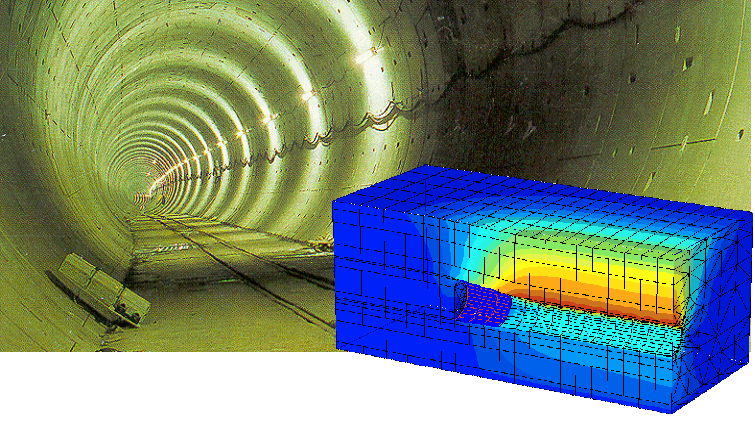Developing a parallel solver for mechanical problems
Konrad Kaliszka
Daily supervisor: Martin van Gijzen
Site of the project:
Plaxis
Delftechpark 53
2628 XJ Delft
start of the project:
October 2009
In February 2010 the
Interim Thesis
has been appeared and a
presentation
has been given.
The Master project has been finished in September 2010
by the completion of the
Masters Thesis
and a final presentation has been given.
For working address etc. we refer to our
alumnipage.
Summary of the master project:
Plaxis is using and developing a range of finite element packages intended for 2D and 3D
analysis of deformation, stability and groundwater flow in geotechnical
engineering. Geotechnical applications require advanced constitutive
models for the simulation of the non-linear and time-dependent behavior
of soils. In addition, since soil is a multi-phase material, special
procedures are required to deal with hydrostatic and non-hydrostatic
pore pressures in the soil.
Within the finite element formulation large linear systems have
to be solved. At this moment fast and robust iterative solvers are
available for sequential computing. Since more and more present day
computers consists of more cores, Plaxis is working on parallelization
of these solvers. It is not so easy to parallelize the current solver
with the same amount of iterations. In this project other techniques
are investigated in order to develop robust and efficient parallel solvers.
As a first approach domain decomposition methods have to be studied.
After a good DD method has been selected the properties of this method
is investigated for the problems originating from geotechnical applications.
A combination of this method with a second level preconditioner is the
next step in this investigation. Finally, instead of an arbitrary data
partitioning, the decomposition of the computational domain should
be based on the physical properties of the domain. This decomposition
can be used to have special preconditioners for certain subdomains and
can also be used to develop a good second level preconditioner.
If time permits another research question is: how to accelerate the
solution of a non-linear problem by using information from the solution
process of previous linear systems.

Plaxis 3D Tunnel

PlaxFlow

Contact information:
Kees
Vuik

Back to the
home page
or the
Master students page of Kees Vuik


![]()
![]()